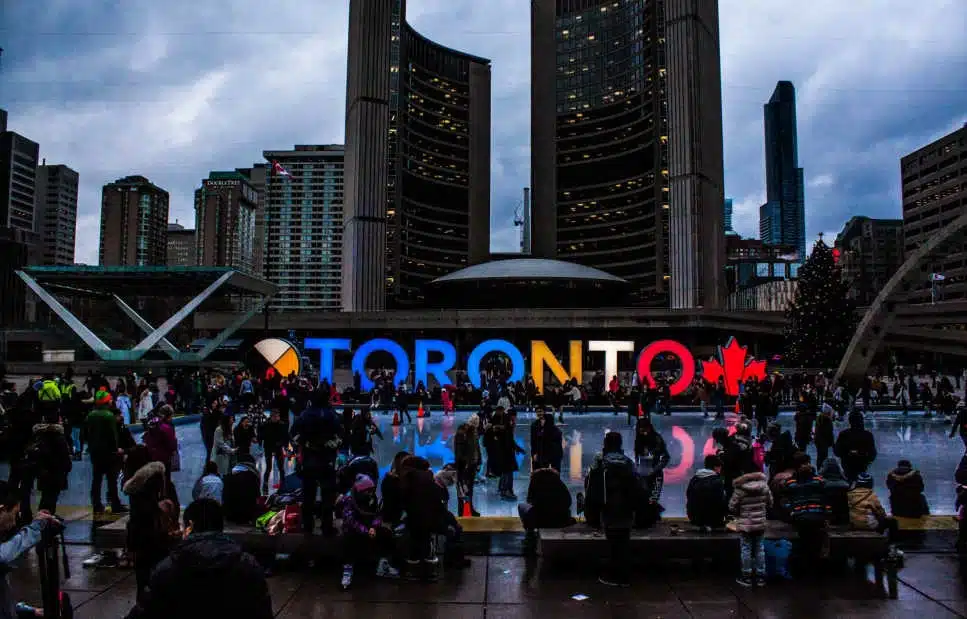David and Laura Jenkins always dreamed of living in Italy. They enjoy quiet mornings by Lake Garda, surrounded by beauty and comfort. Their move became possible through the Italy retirement visa for US citizens, a program that allows Americans to settle in Italy without employment. It discovered affordable living, excellent healthcare, and a lifestyle that values time and community.
“We spend less and live better,” Laura says. Their story reflects how retirees can turn the Italian dream into everyday life filled with ease and elegance.
This guide explains how retirees can turn their Italian dream into reality.
What Is the Italy Retirement Visa for US Citizens?
The Italy retirement visa is a special program for long-term living. The official name is Elective Residency Visa (ERV). It invites those who wish to live slowly and meaningfully amid Italy’s charm. This visa allows Americans with financial independence to settle without needing to work.
[sharethis-inline-buttons]Pensions, savings, or investment income serve as the foundation for approval. Retirees must present solid income records. When the visa is approved, they enter Italy and obtain their residence permit.
In time, five years bring permanent residency. With patience and continuity, citizenship follows, an entry to the European Union’s shared freedom and comfort.

Related – Italy Digital Nomad Visa for Remote Workers is Waiting for You
Why Do US Citizens Choose Italy for Retirement?
Lower costs, longer lives, and strong care draw many to Italy first. Living expenses stretch further. Including rent, Rome is about 49% cheaper than New York, according to Numbeo’s mid-year index and city comparison (Numbeo).
Healthcare performs well. Universal healthcare in Italy supports longer lives, 2.4 years above the OECD average (OECD). Healthy years also count. Across the European Union, people enjoy roughly 63 healthy years at birth, a benchmark Italy tracks closely in regional comparisons (European Commission).
Community eases the move. Local markets, cafés, and festivals build daily connections in neighborhoods and small towns. Read our complete guide about moving to Italy from the United States.
What Are the Financial Requirements for the Italy Retirement Visa for US Citizens?
Applicants must show steady yearly income. First, the Italian government requires about €31,000 per year for one person and €38,000 to €40,000 for a couple.
Additionally, pensions, social security, and savings all qualify as income. Moreover, proof through bank statements or tax records is required. Since certain consulates may require additional income proof in expensive areas, reviewing their conditions in advance is important.
Finally, before arriving, retirees must have a furnished residence to demonstrate plans for a lasting stay in Italy.
To confirm all recent requirements, please check the Italian Ministry of Foreign Affairs website.
[sharethis-inline-buttons]“It took planning, but the process was worth it,” said Richard Moore, a retired teacher from Boston. “Now, every sunrise over the Tuscan hills reminds me why we made this move.”
What Documents Are Required for an Italy Retirement Visa?
Applicants must first collect the required documents before applying. Each paper supports proof of income, insurance, and intent to live in Italy. With proper preparation, the process moves faster and approval becomes easier.
The most common include –
- Valid U.S. passport (with at least six months before expiry)
- Passport-sized photos
- Completed visa application form
- Proof of financial means (pension statements, bank records, etc.)
- Proof of accommodation in Italy (lease or ownership documents)
- Comprehensive international health insurance
- FBI background check
- Letter explaining reasons for living in Italy
All documents must be translated into Italian and legalized with an apostille if issued in the U.S.
Also read – Travel to Italy on a Budget Made Easy with These Simple Steps
How Long Does the Application Process Take?
The process often takes between 30 and 90 days. However, timelines can vary with appointment demand and document accuracy. Therefore, documents should be handed in at the Italian consulate responsible for the applicant’s U.S. residence. Moreover, early reservations prevent long waiting times.
After approval, retirees have one year to enter Italy and start the process. Then, they apply for their residence permit within that time.
Once in Italy, they register with local offices to confirm residency. Finally, this step finalizes their stay and grants access to essential services.
For faster approval, prepare every document in advance with proper translation and notarization.
What Are the Healthcare Options for Retirees?
After receiving residency, retirees gain access to Italy’s public healthcare system, the Servizio Sanitario Nazionale (SSN).
At first, many choose private international insurance for full coverage. Options include Cigna Global, Allianz Care, IMG Global, and AXA International. Later, they often switch to public insurance through the SSN for lower costs.
Italy’s healthcare ranks among the top in Europe. Moreover, the system offers affordable care and modern medical facilities. It also promotes preventive care to keep residents healthy. Therefore, this gives retirees lasting comfort and peace of mind.
How Much Does the Italy Retirement Visa for US Citizens Cost?
Costs vary across Italy, yet daily comfort remains attainable. Apartments in Florence or Rome cost €900 to €1,300. Central locations raise the price. Smaller towns offer calmer living. In Lecce or Lucca, rent is around €500 to €700.
Two people can manage groceries for less than €400 monthly. Retirees can enjoy a balanced lifestyle in Italy on $2,500 to $3,500 a month. With healthy meals and dependable healthcare, peace becomes part of daily life.
“It feels like living well without overspending,” said Robert Harris, a retired teacher from California who settled in Lucca.
Can You Bring Family Members?
Yes, family members can also join under the same visa type. Moreover, they must meet the combined income criteria set by Italian authorities. In addition, spouses, dependent children, and parents are all eligible to apply. Yet, they can do so through family reunification once the main applicant’s visa receives approval.
However, authorities often ask for extra proof of income. They may also request verified relationship documents. These include marriage or birth certificates. Each document must be translated into Italian and properly authenticated.
In addition, each family member must hold valid health insurance and show sufficient financial support to live independently.
Are There Tax Benefits or Considerations for the Italy Retirement Visa for US Citizens?
Taxes matter in retirement. Every dollar counts when life slows down.
In Italy, residents pay tax on global income. Yet, the U.S.-Italy tax treaty prevents double taxation. Therefore, each country claims only its fair share.
The southern landscape brings financial ease. Regions such as Sicily, Calabria, and Puglia apply a 7% flat tax on pensions for ten years in towns with under 20,000 residents.
For many, the savings are real. A retiree earning $50,000 a year pays about $3,500 in tax under this scheme. Life becomes simpler. The sun warmer.
For complete details, visit the Agenzia delle Entrate.
How Can US Citizens Renew or Extend Their Visa?
The residence permit from the Italy retirement visa for US citizens lasts one year. Renewal is direct. Show proof of income and health insurance each year.
After five years of continuous stay, permanent residence becomes possible. It marks a quiet sense of belonging. After ten years, citizenship may follow. Applicants must show legal stay and pass a language test.
Each renewal feels like another sunrise in Italy. Time turns a foreign land into home.
Can Retirees Buy Property in Italy?
Yes. Americans can freely buy property in Italy. In fact, there are no ownership limits. Moreover, buying a home helps with the visa process. It shows commitment and stability. Officials, therefore, see it as proof of genuine intent to stay.
Meanwhile, prices climb with scenery. For instance, Umbria offers homes from €100,000. Tuscany’s villas reach €500,000 and beyond. Town apartments stay near €1,800 per square meter, but Milan’s reach €6,000.
Furthermore, taxes stay modest. Buyers usually pay around 9% for registration and legal costs. Most homeowners pay between €500 and €1,000 in yearly taxes.
Finally, owning a home does not grant residency. Yet it builds trust. It anchors life in Italy and strengthens every application.
Recommended read – Buying a Home After Retirement – Is it the Right Move for You?
Step Into Italy with Confidence Through Relo.AI
Moving to Italy with the Italy retirement visa for US citizens needs clear planning. Every step matters. Italy offers charm and comfort, but its paperwork can feel complex without local support.
Relo.AI simplifies that process. Moreover, we understand both U.S. systems and Italian residency rules, guiding retirees through every requirement. Yet, you receive full help in choosing a home, verifying finances, applying for healthcare, and finalizing residency papers with a smooth, accurate process.
Using real-time technology and a reliable local network, we make your relocation feel natural, from your flight arrival to your first walk through the neighborhood.
With us, your move becomes organized, transparent, and stress-free.
Plan your Italian retirement with clarity. Set up a FREE consultation now and let us take care of the relocation process while you plan your Italian retirement.
Summing It All Up
The Italy retirement visa for US citizens offers a simple path to peaceful living. It provides retirees with the chance to live surrounded by flavor, sunlight, and calm. With reliable income and care in preparation, Italy turns ordinary days into lasting comfort. Life after retirement in Italy brings comfort, care, and connection.
Excellent healthcare and friendly locals create a sense of belonging in every town.










